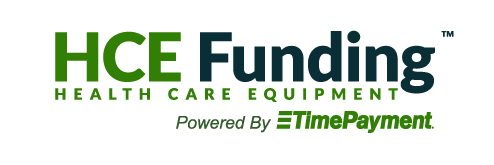
The Rise of Home Health Care
According to the National Association for Home Care and Hospice, home care began in the US in the 1880s. Approximately 12 million individuals currently receive care from more than 33,000 providers. According to the Centers for Medicare and Medicaid Services, annual expenditures for home health care were projected to be $108.8 billion for 2019.
Provider Type
“Home care organizations” include home health care agencies, home care aide organizations, and hospices. Some of these organizations are Medicare-certified, which allows providers to bill Medicare for reimbursement.
- More than 62 percent of agencies are freestanding
- 12 percent are hospital-based.
Non-certified home care agencies, home care aide organizations and hospices that remain outside of Medicare do so for a variety of reasons. Often they do not provide the breadth of services that Medicare requires, such as skilled nursing care.
Services
Home health services include:
- Home Health Aide Services
- Medical Social Work Services
- Nursing Services
- Nutritional Services
- Physical Therapy Services
- Occupational Therapy Services
- Respiratory Therapy Services
- Speech Therapy Services
- Home Medical Supplies and Equipment
- Professional Medical Equipment Assessment Services
Utilization
CMS projects that:
- total national expenditures for home health care are projected to hit $186.8 trillion by 2027.
- home health care spending saw a 30% increase over the last five years, according to figures in 2018
Payers
Medicare is the largest single payer of home health care services. In 2009, Medicare spending accounted for approximately 41 percent of home health expenditures.
Medicaid payments for home care are divided into three main categories: the mandatory traditional home health benefit, and two optional programs, the personal care option and home and community-based waivers. Together, these three home care service categories represent a relatively small but growing portion of total Medicaid payments.
Health care services in the United States are increasingly financed through managed care organizations. Managed care organizations, including health maintenance organizations (HMOs), typically finance health care services through a negotiated, prepaid rate to health care providers.
Recipients of Care and Caregivers
- Approximately 7.6 million people in the US require some form of home health care.
- More than 20,000 home health care providers exist today.
- Almost two-thirds (63.8 percent) of home health care recipients are women.
- More than two-thirds (69.1 percent) of home health care recipients are over age 65.
- Conditions requiring home health care most frequently include diabetes, heart failure, chronic ulcer of the skin, osteoarthritis, and hypertension.
- More than one in three US households (an estimated 48.9 million caregivers over age 18) are informal caregivers for a person older than age 18, with an additional 16.8 million caring for children or both children and adults, for a total of 65.7 million individual caregivers.
- 63 percent of caregivers are married and/or living with a partner, and two-thirds (66 percent) are women.
- One-third (34 percent) care for two or more people, with 86 percent providing care to a relative—more than one-third caring for a parent and one in seven (14 percent) caring for their own child.
- The typical caregiver is a 48-year-old woman who provides more than 20 hours of care each week.
Paid Caregivers
Formal caregivers include professionals and paraprofessionals who are compensated to provide in-home health care and personal care services.
- 958,000 persons were employed in home health care agencies in 2008.
- the largest numbers of employees/FTEs are home care aides and RNs.
- from 1993 to 2008, home care employment grew an average 5.4 percent annually (510,000 to 961,400).
Appropriateness of Care
Home care is a cost-effective service for individuals recuperating from a hospital stay and for those who, because of a functional or cognitive disability, are unable to take care of themselves. Home care reinforces and supplements care provided by family members and friends and maintain the recipient’s dignity and independence. Patients who received home care services were also less likely to be readmitted for hospital care.
Challenges
In 2011, the industry faced a new challenge. Medicare beneficiaries are required to see a doctor 90 days before or 30 days after starting home health services in order for the home health agency to get reimbursed. Under the old law, a doctor could prescribe home health care for patients to receive services, but the physician didn’t have to see a patient to make that determination.
Under the new rule, doctors have to fill out a form certifying that they or another health care provider such as a nurse practitioner had seen a patient for the specific purpose of determining the patient’s need for home care. This is in addition to doctors’ current duties of prescribing home health care and signing off on a care plan, which is typically developed by the home health agency.
